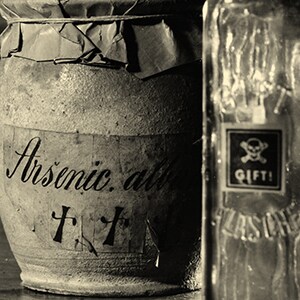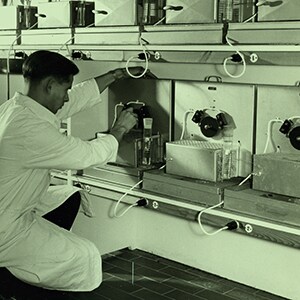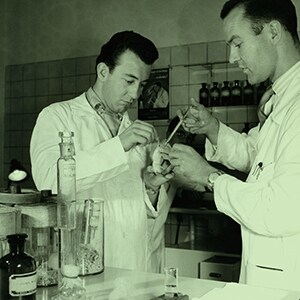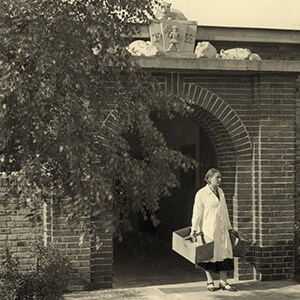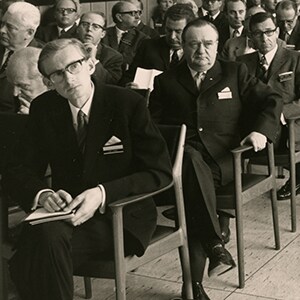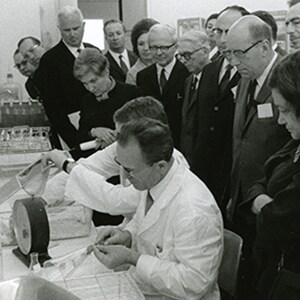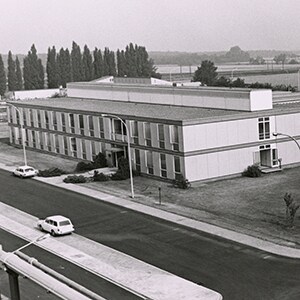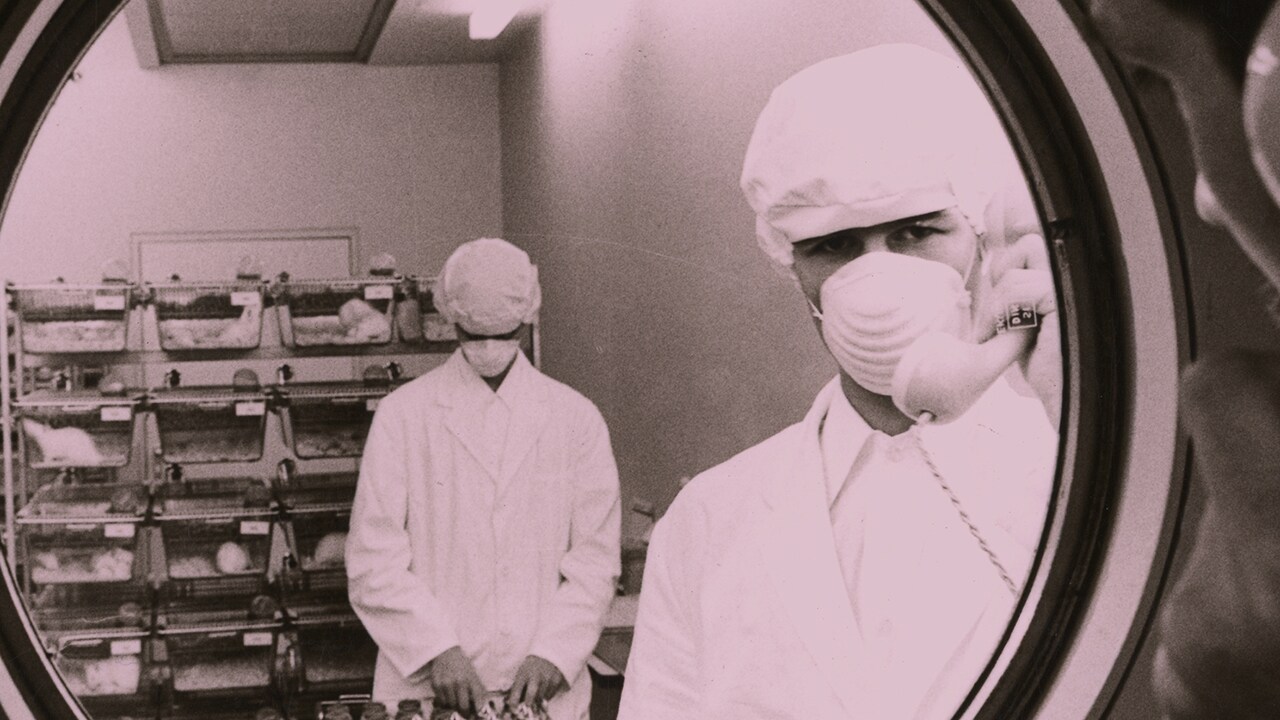
»The task of the toxicologists is fulfilled when all [...] have the absolute certainty that health damage can never occur when Merck [E. Merck, Darmstadt, Germany] drugs and other products of our company are used as intended.«
Harald Frohberg, Head of the Toxicology Department, 1969
Often it is the dose alone that transforms a substance from a cure into a poison. In 1720, when the pharmacist Johann Franz Merck gives a substance, which in certain doses can be poisonous, »to an old and oafish man without a doctor’s prescription and contrary to medical regulations« and this man’s wife uses the substance to commit suicide, the company is sentenced to pay a fine. The investigation shows the woman to be severely ill and »highly melancholic«. Under these circumstances, the question as to who is to be held liable is viewed forgivingly, even by the church; the company’s fundamental integrity is reinforced and the fine is retracted. Nevertheless, the case serves in highlighting the special responsibility of pharmacists.
Especially in plants, the borderline between the rapeutically desired and harmful effects is obvious. For example, belladonna, opium poppy or thorn apple contain substances that are highly toxic. Accordingly, they are considered »witch herbs« until the ingredients can be extracted and analyzed in the 19th century. Even early on, the quality and efficacy of substances are tested in pharmacies using simple methods, but undesirable effects cannot be ruled out before recognizing that they potentially exist. The first systematic studies on the risks of drugs are conducted in the 19th century, but it is not until the 20th century that the need for complete recording of undesirable side effects is recognized and consistently implemented.
Toxicological studies are an indispensable pre-requisite for clinical research. The task of toxicology is to identify and assess, by means of animal studies, the potential risks of a new pharmaceutical with regard to its use in humans. At the beginning of the 1960s, toxicological studies were initially conducted at the company on a limited scale as part of experimental medical research. Due to increasing requirements and new working methods, the company decides in the mid-1960s to establish an Institute for Toxicology.
The building with an adjacent animal research unit is constructed at a cost of DM 8 million. It is designed for nearly all acute and chronic toxicological tests on research animals common at the time. The first phase of construction of the new toxicological laboratories is completed, allowing operations to begin in February 1969. The inauguration of the research facility takes place on October 1, 1969 with numerous guests from Germany and abroad.
Drugs can be both cures and poisons: cocaine, morphine, arsenic – the list of both beneficial and harmful substancesis long, depending on their use. In the early 1960s, the company carries out toxicological studies to a limited extent within the scope of experimental medical research.
An animal husbandry building with an decorative entrance is constructed in 1933. The first stage of construction of the toxicological laboratories is inaugurated in 1969. Harald Frohberg, Head of the Toxicology Department, explaining the tasks of toxicology in the pharmaceutical industry to interested listeners.
During a guided tour of the new facilities, guests have the opportunity to have a close look at the histological-pathological, hematological and clinical-chemical laboratories. In the following years, the Toxicology Department,which boasts state-of-the-art equipment, is continuously expanded.

